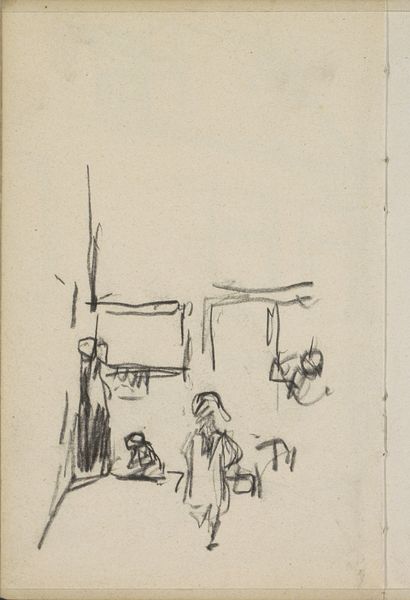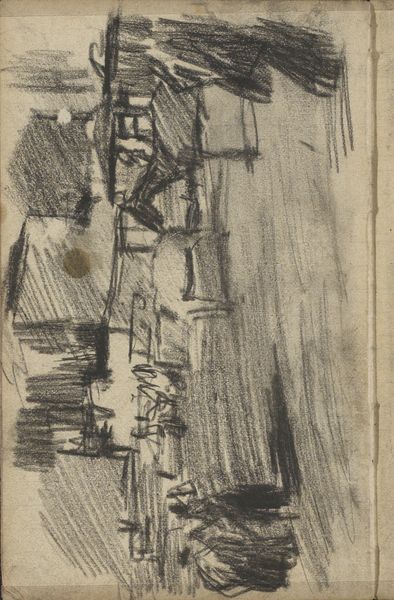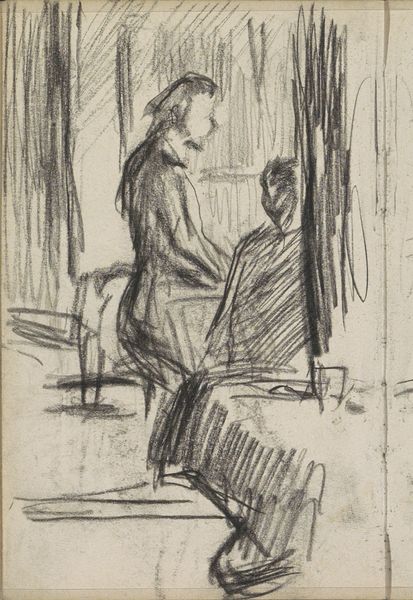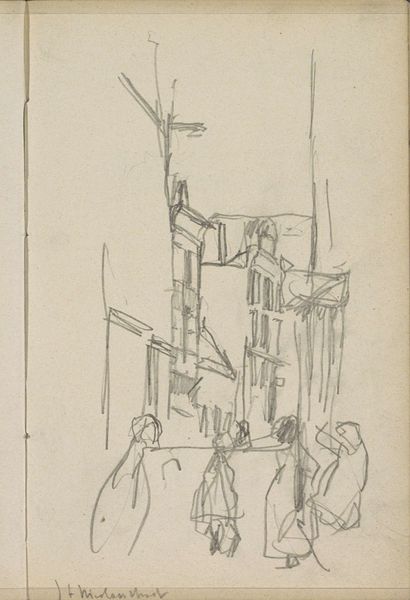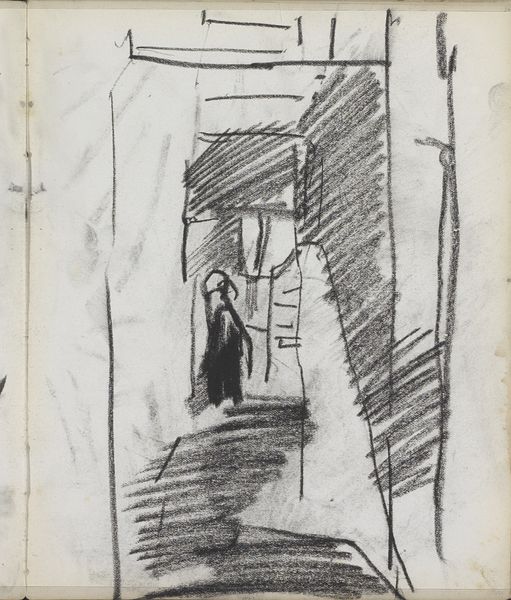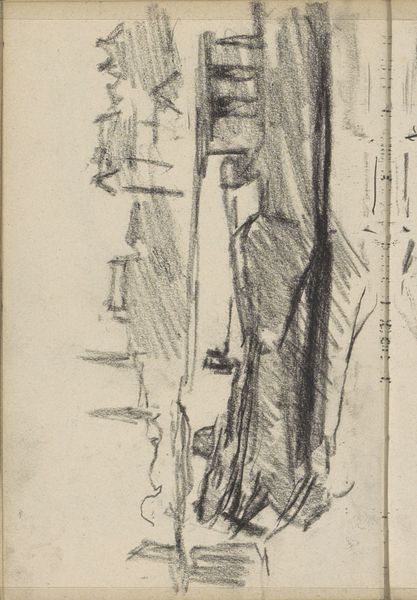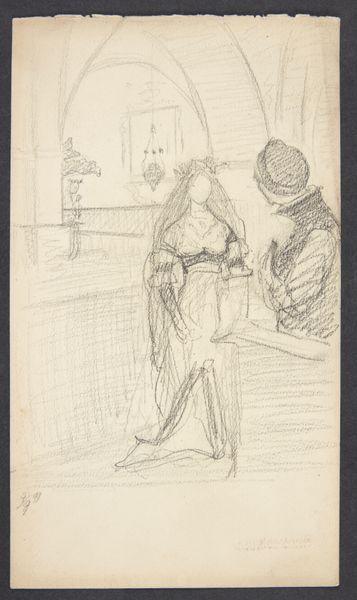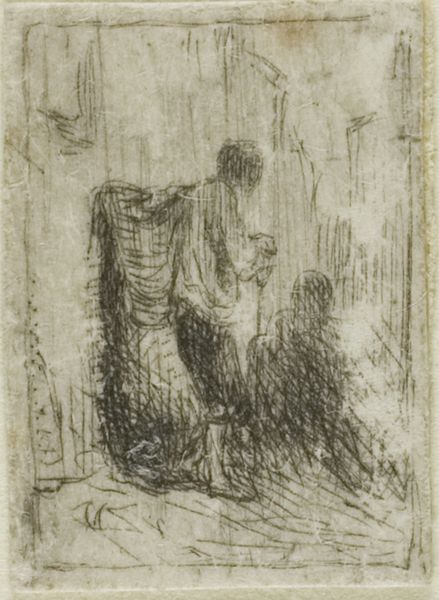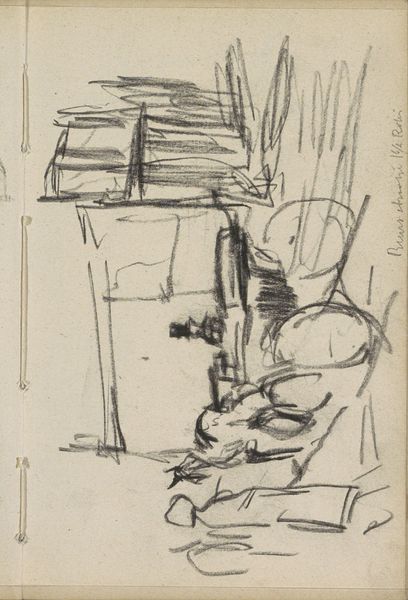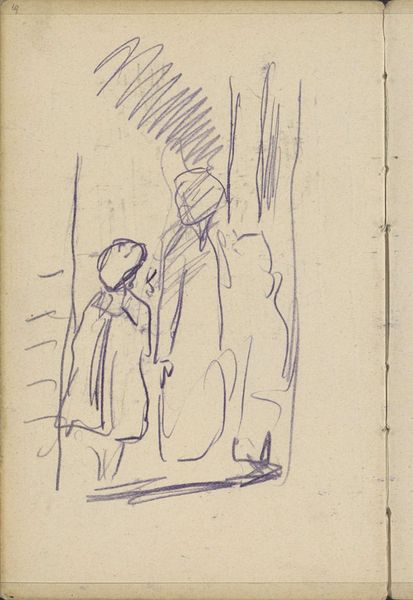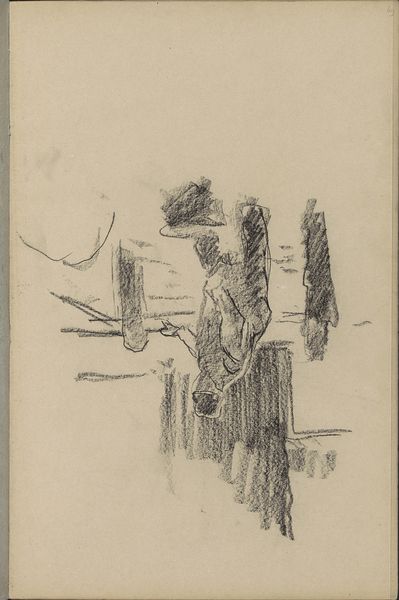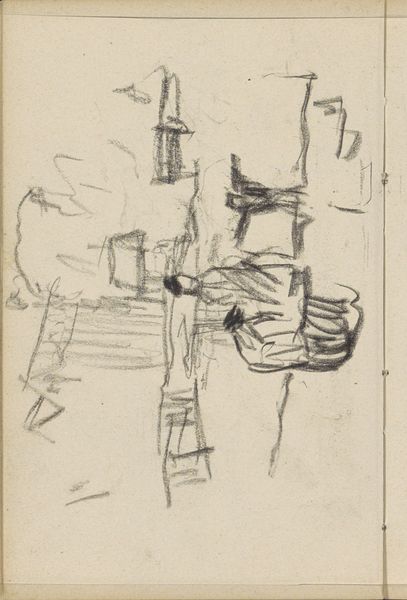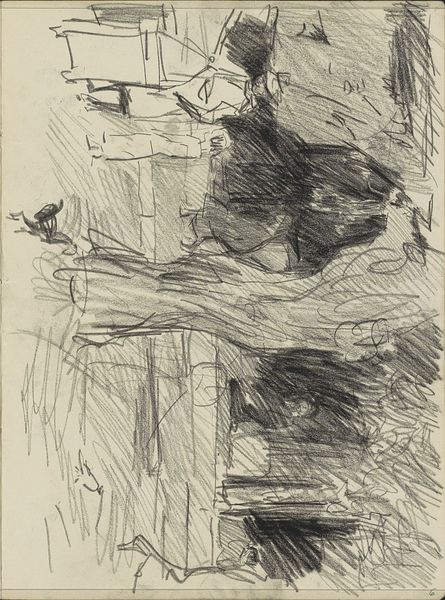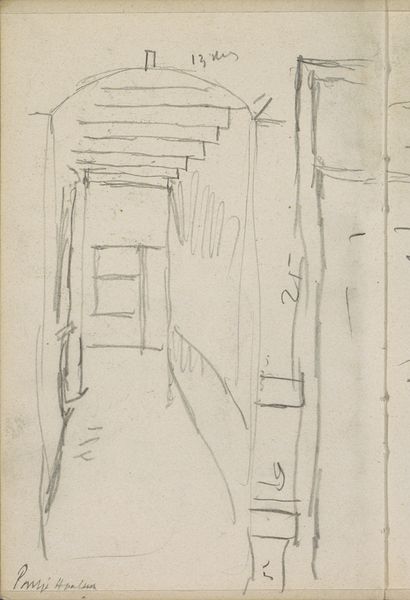
Copyright: Rijks Museum: Open Domain
Editor: So, here we have George Hendrik Breitner's "Figuren bij de Kortrijksepoortstraat te Gent," created between 1907 and 1909, a pencil drawing housed at the Rijksmuseum. It has this ephemeral quality...a quick sketch of figures within a cityscape. What do you see in this piece? Curator: It speaks volumes about the fleeting moments of urban life at the turn of the century. Breitner captures the lives of ordinary people, rendered here in the rawest strokes. This glimpse into the Kortrijksepoortstraat is not merely a street scene but a vignette of gendered labor and social stratification. Consider how the architecture looms, possibly signifying institutions, over these figures, especially the female figure. What kind of societal forces do you think might be in play? Editor: I guess, now that you mention it, there’s an almost anonymous quality to them. I hadn't considered how their presence contrasts with the weight of the architecture, making them appear quite vulnerable. Curator: Exactly. Think about the history of urban development and how it disproportionately impacts women and the working class. Breitner subtly reveals these power dynamics through his choice of subject and composition. Do you notice how his Impressionistic style also speaks to that impermanence of life for these figures? Editor: Yes, I see it now. The style emphasizes that fleeting quality even more, giving that sense of uncertainty in their future. I see so much now just below the surface. Thanks! Curator: Indeed. It's a poignant commentary, subtly urging us to question the forces shaping these people’s lives in early 20th century Gent. Every stroke is heavy with social meaning and open for future interpretation.
Comments
No comments
Be the first to comment and join the conversation on the ultimate creative platform.
